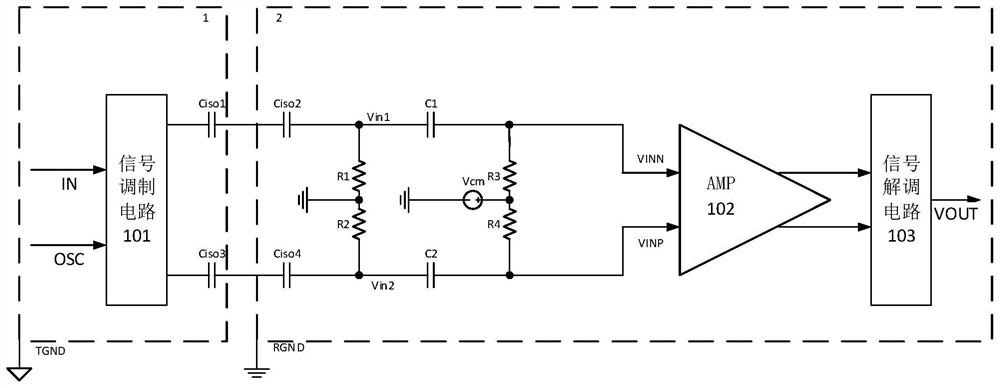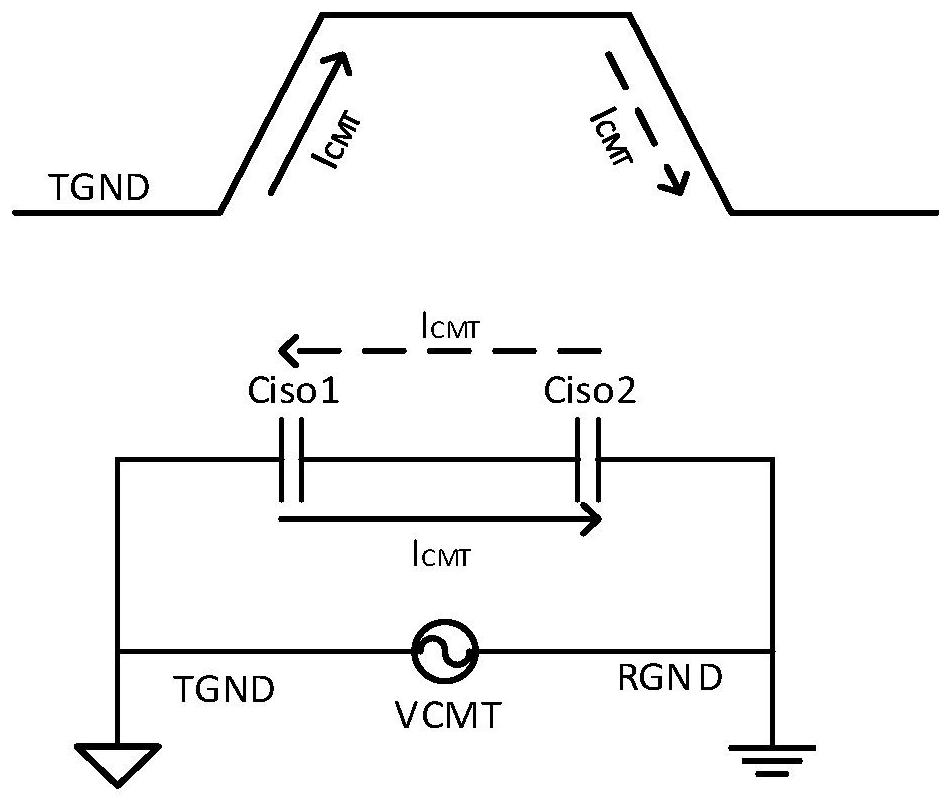Common-mode transient interference suppression circuit and isolator
A transient interference and suppression circuit technology, applied in the field of circuits, can solve the problems of limited common-mode input range of differential structure and transmission signal errors, and achieve the effect of improving the ability to resist common-mode transient interference and suppressing abnormal signal decoding.
- Summary
- Abstract
- Description
- Claims
- Application Information
AI Technical Summary
Problems solved by technology
Method used
Image
Examples
Embodiment Construction
[0050] In order to make the above objects, features and beneficial effects of the present invention more clearly understood, specific embodiments of the present invention will be described in detail below with reference to the accompanying drawings.
[0051] The following description sets forth numerous specific details, such as examples of specific systems, components, methods, etc., in order to provide a better understanding of several embodiments of the present invention. However, it will be apparent to one skilled in the art that at least some embodiments of the present invention may be practiced without these specific details. In other instances, well-known components or methods have not been described in detail or presented in simple block diagram format in order to avoid unnecessarily obscuring the present invention. Therefore, the specific details set forth are merely exemplary. Particular implementations may vary from these exemplary details and still be contemplated...
PUM
 Login to view more
Login to view more Abstract
Description
Claims
Application Information
 Login to view more
Login to view more - R&D Engineer
- R&D Manager
- IP Professional
- Industry Leading Data Capabilities
- Powerful AI technology
- Patent DNA Extraction
Browse by: Latest US Patents, China's latest patents, Technical Efficacy Thesaurus, Application Domain, Technology Topic.
© 2024 PatSnap. All rights reserved.Legal|Privacy policy|Modern Slavery Act Transparency Statement|Sitemap



